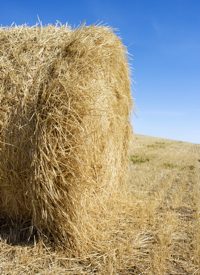
The issue culminated from an EPA compliance order charging Callicrate Feeding Company with a list of environmental violations. The EPA’s Region 7 office detailed the violations in a news release:
An inspection in February 2011 identified significant NPDES permit violations, including failure to maintain adequate wastewater storage capacity, failure to meet Nutrient Management Plan requirements, failure to conduct operations within areas that are controlled in a manner capable of preventing pollution, and failure to maintain adequate records. The order requires the operation to comply with all terms of the Clean Water Act and its NPDES permit, and to coordinate with the Kansas Department of Health and Environment on its compliance. The order requires the operation to comply with the terms of its Nutrient Management Plan, including sampling and recordkeeping requirements. The feedlot has a permitted capacity of 12,000 cattle and was confining approximately 3,219 cattle at the time of the inspection.
During the 12th Annual R-CALF USA Convention held in late August, Kansas cattle feeder Mike Callicrate was asked, "Has the Environmental Protection Agency declared hay a pollutant?" Callicrate responded affirmatively, while he described the EPA’s enforcement action against his Kansas feedlot for failing to store hay in a pollution containment zone. "Now that EPA has declared hay a pollutant, every farmer and rancher that stores hay, or that leaves a broken hay bale in the field is potentially violating EPA rules and subject to an EPA enforcement action," he charged. "How far are we going to let this agency go before we stand up and do something about it?"
Being a small to mid-sized feedlot, Callicrate is authorized to stock 12,000 cattle in his lot, which pales in comparison to JBS Brazil — the world’s largest beef packer — with its capacity of over 900,000 cattle and other mega-feedlots that reserve hundreds of thousands of cattle at a time.
Callicrate and other small to mid-sized feedlots claim that the EPA’s compliance order is a ploy for corporate beef packers to eliminate small feeders from the market, as the agency is singling out only certain feeding enterprises. "I believe the EPA’s enforcement action is a premeditated effort by EPA to partner with the beef packers to finish the job the beef packer’s couldn’t do alone," Callicrate alleged. "Along with my feedlot, the EPA has filed enforcement actions against five other smaller feedlots, including one with only 400 cattle."
Callicrate contends that while badgering small feedlots with burdensome regulations the EPA is overlooking the large corporate operations: "EPA is turning a blind eye toward the mega-feedlots that are a real risk for pollution and, instead, is antagonizing small to mid-sized family operations in an effort to help their packer-partners capture the entire live cattle supply chain away from family farm and ranch operations."
After investigating the EPA-Callicate fiasco, Drovers/CattleNetwork, a news source for the beef industry, inferred that R-CALF USA’s release was somewhat "exaggerated." Reporters from the network contacted Dan Breedlove, assistant regional counsel for the EPA’s Region 7 office, who detailed the violations in the compliance order.
Breedlove noted that under the Clean Water Act, Concentrated Animal Feeding Operations can be subjected to four counts of violations: failure to maintain adequate records, failure to maintain adequate storage capacity, failure to maintain nutrient management plan requirements, and failure to operate production within controlled areas to prevent pollution.
Drovers/CattleNetwork reported:
Asked specifically what types of feed were stored in the feed stock area at the Callicrate facility at the time of the inspection, Breedlove says the area contained "distillers’ grains, silage and other feeds that could leach pollutants. It was not just hay." Feed stock storage areas are part of a feedlot’s production area subject to runoff-control regulations, he says, adding however that EPA focuses on feeds such as distillers’ grains with greater potential to leach nutrients, rather than hay.
Though R-CALF USA’s spirited allegation that the EPA labeled hay a pollutant may be somewhat of a stretch, Drovers/CattleNetwork concedes that cattle feeders are undoubtedly constrained by many burdensome EPA regulations. Feeding permits are expensive and meticulous record-keeping and reporting are time-consuming for owners and managers. And with new environmental regulations streaming through the government pipeline, they ought to brace themselves for more.



